Back to top: Lithics
Introduction
Lithic artifacts comprise 38% of the items excavated so far in Unit J5. Worked stone blades (54), including debitage and flakes (13), and stones for grinding (63)formed the majority of the corpus. Smaller numbers of beads (33), door sockets (16), and stone tools for a variety of uses (37) were excavated
Back to top: Lithics
Small worked stone
Fragments of flint blades, scrapers, and other small tools, as well as the debitage from their manufacture were the single-most common items. None of the blades was complete. One may have been a projectile point. In addition they were widely distributed in space and time. There were only a few obsidian fragments found.
| Obsidian Exemplars |
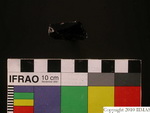 |
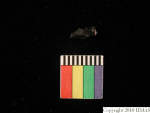 |
| Flint Exemplars |
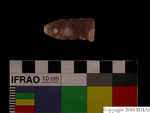 |
 |
Back to top: Lithics
Grinding and polishing stones
There were almost as many grinding stones as blades excavated. As with other types of items, most were widely scattered. However a13 comprised 12 whole and broken basalt pestals while i27 comprised two basalt pestals with a trace of bronze residue. There were a significant number of medium-sized stone polishing tools of various shapes. We identified them by at least one smooth surface.
| Large Pestals |
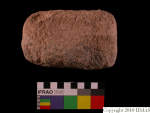 |
 |
| Polishing Stones |  |  |
Back to top: Lithics
Beads
There were several beads excavated; two exemplars are presented.
| Stone beads |  | 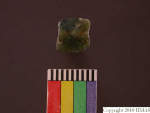 |
Back to top: Lithics
Miscellaneus
There were several broken stone artifacts shaped roughly like stone donuts. See q436.1. Several uses have been proposed, including pivot stones for pottery wheels, door sockets, and soil tampers. Seven lithic samples were retained. The most unusual was a quartz crystal.
Back to top: Lithics